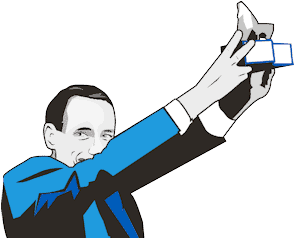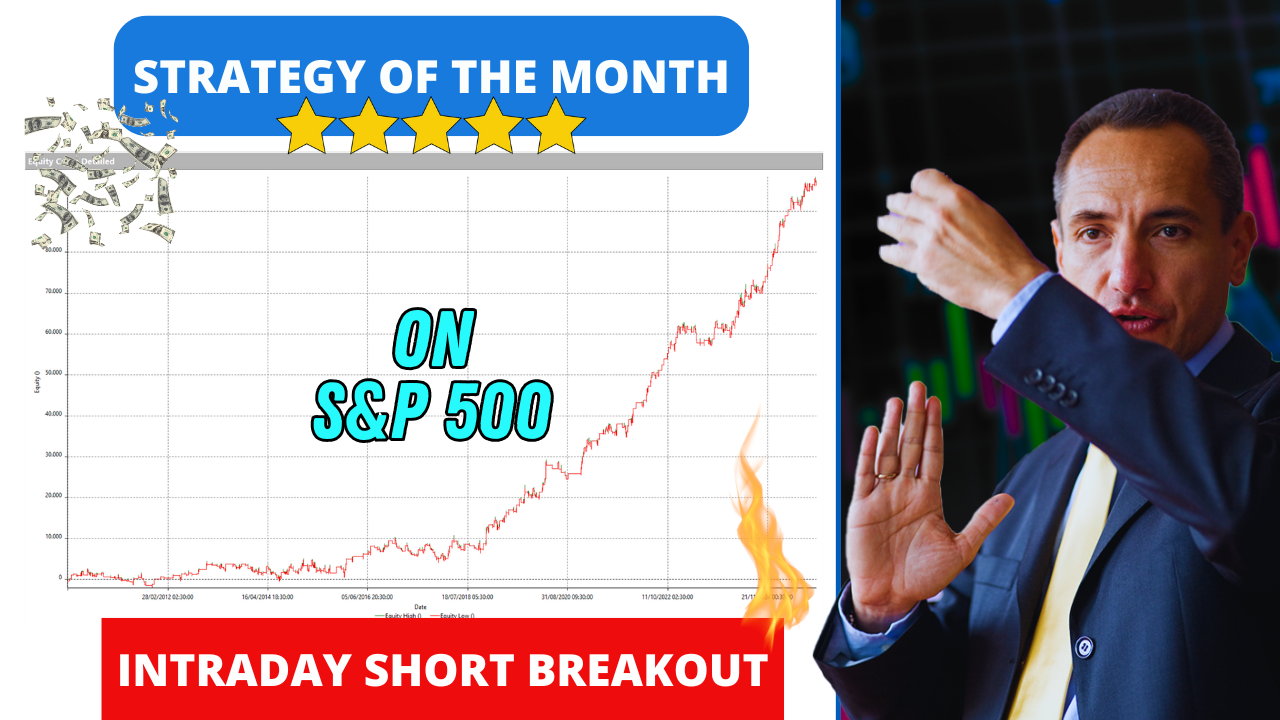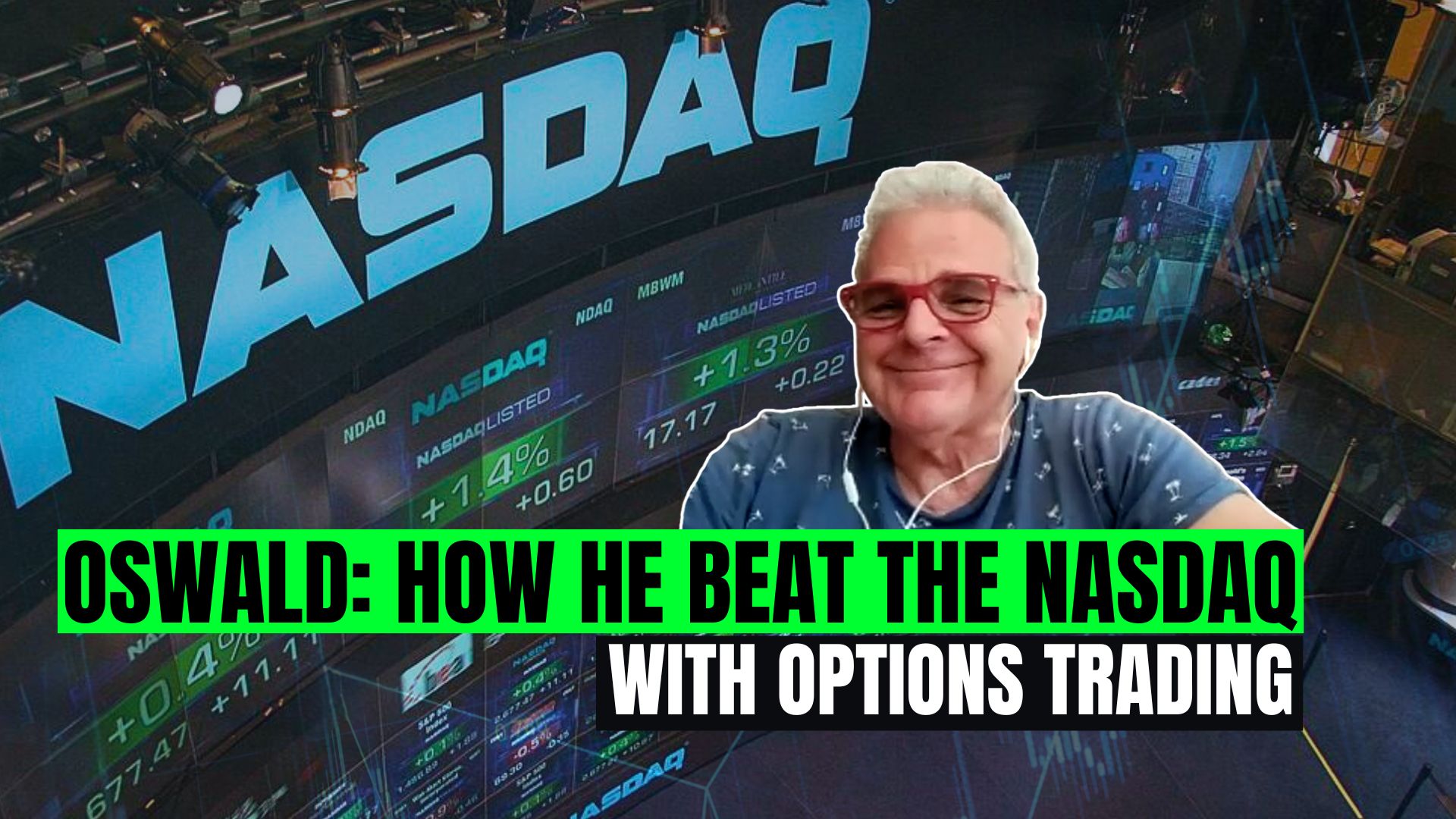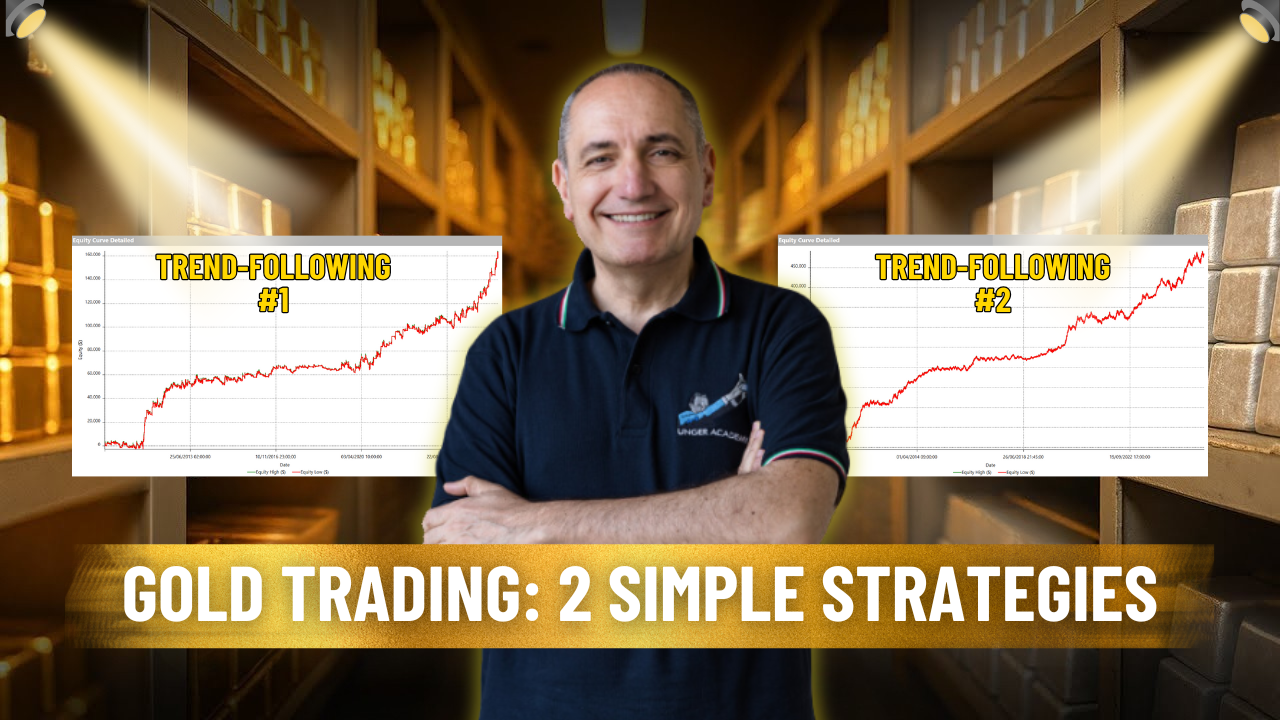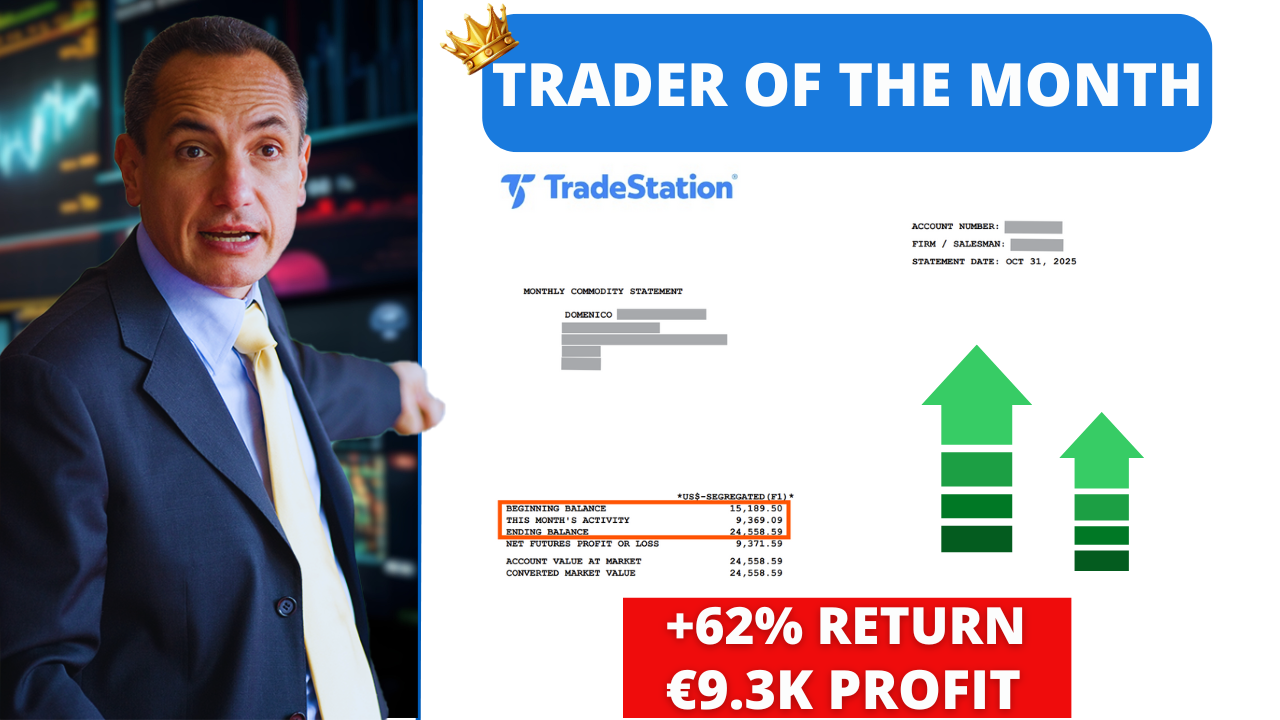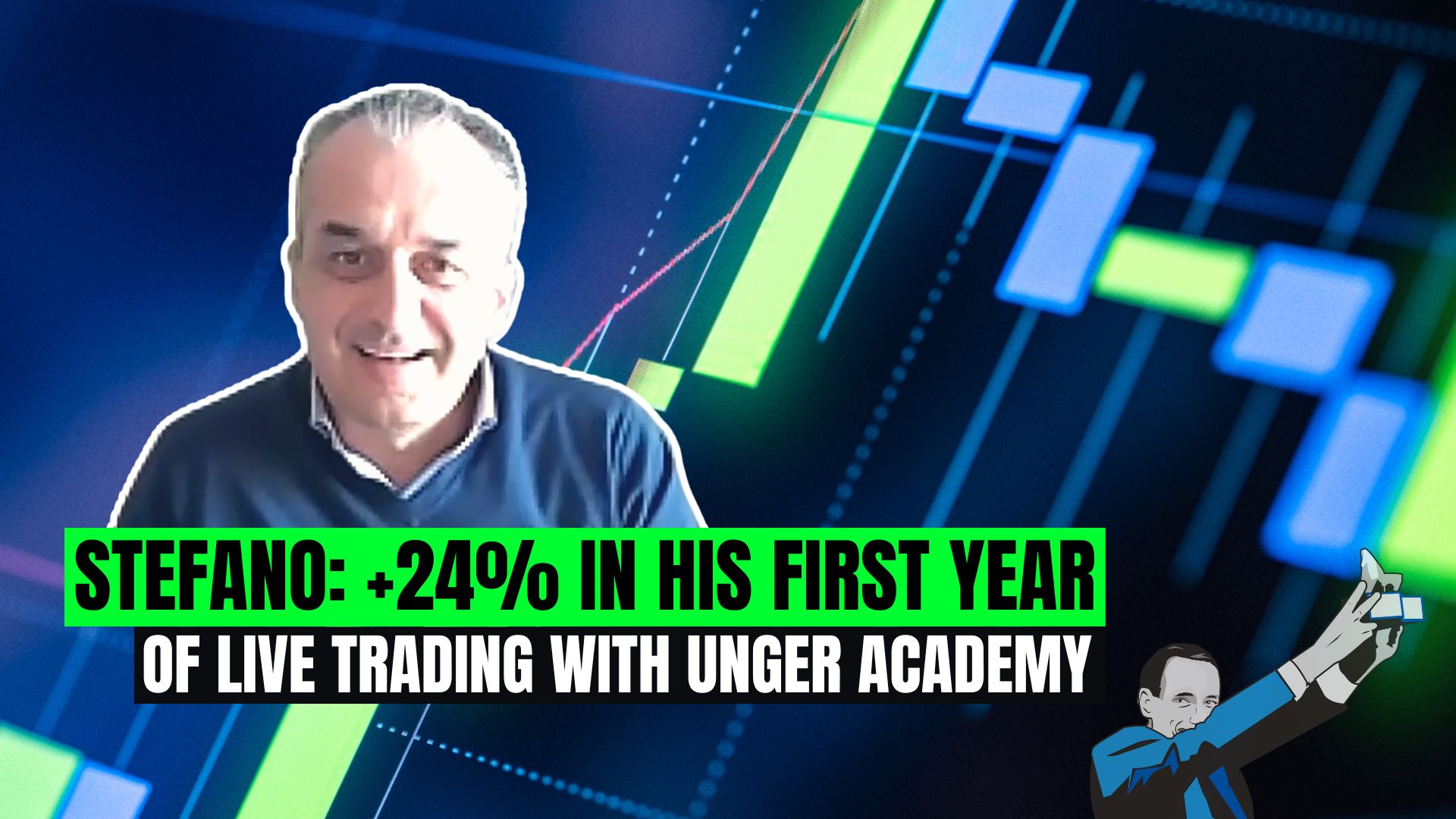Hey everyone and welcome back. One of the coaches at Unger Academy here and today we’re going to be discussing some aspects related to the functioning of trading systems during live trading. We’ll see more in detail what can be the causes that take our systems off course during live trading. To do this, there is nothing better than to share with you something that happened to me just a few weeks ago.
Backtest VS Real Trading
Now often, when we refer to systematic trading, we think that during live trading nothing can go wrong because the systems do everything automatically, right? In reality this sentence is true only in part, because during stormy market periods we could encounter some problems linked, for example, to a strong slippage, maybe due to a high market volatility.
Here on the left side of the chart you can see the backtest of a system that I had live on January 24, 2022. And from this backtest this system would have achieved three profit targets.
On the right instead you can see a reconstruction of what happened to me in live trading. Namely a profit target, the first one, that more or less coincides. And then a stop loss.
So let’s try to understand what happened to my strategy and on the market on January 24, 2022. This is a breakout system that enters short. It only uses the cash session, so trading starts at 08:30 am, and enters with market orders if there was a breakout in the previous bars.
So, the first entry of the day for this strategy should have been at the opening of this bar. You can see it here, the entry should have been at 4,296.75.
Let’s take a look at what happened during live trading. So here are my trades that I made on this day. They are offset by 1 hour, so here we should go to January 24, 2022 at 10:00 am. You can see that I entered short at a price of 4,296.5, which is obviously different from 4,296.75.
How MultiCharts manages stops and take profits
Indeed, here I’ve given you the true price 4,296.5. Why did this happen? Because I was “slipped” by one tick. And because of the way MultiCharts works with stop loss and take profit used with the most classic keywords, namely “set stop loss” and “set profit target”, the monetary value of gain or loss remains the same.
Indeed, as you can see from the image, the strategy entered a little bit above and would have exited with a profit target of $1,500, meaning at 4,266.75. The strategy, during live trading, having been executed at a slightly lower price, put the profit target one tick lower than the theoretical position of the strategy.
So, when I entered in trade at 4,296.50, the strategy sent a take profit order at 4,266.5. This step is very important because it will make you understand what happened next, because for this reason I went from having theoretically two take profit orders to only one stop loss.
Let’s see what happened from the second entry onwards, because the first entry, as I told you, was in any case executed. The trade was shifted by one tick, the price quoted by the market went beyond, well beyond, as you can see the low is much lower, so the trade was still executed even if the real order was shifted by one tick compared to the theoretical position of the strategy.
However, what happened in the second entry? I would have theoretically entered the market at a price of 4,292. Let’s go back to the Interactive Brokers report. We’ll end the first trade, so we entered short at 4,296.5 and then entered long, then returned flat, at 4,266.5.
What happens with higher slippage?
And here is the new short entry, however not at 4,292 but at 4,290.75. This time we’re talking about five ticks of slippage. What did these five slippage ticks imply? Well, the monetary stop loss at $1,200 was hit exactly one tick below the high of this bar.
When in reality, if we were to examine what would have happened if the trade had been executed at the theoretical price, and therefore 1.25 points above, I would never have hit this stop loss.
So, I came out with a stop loss of $1,200, but the strategy would have never seen this stop because it would have performed much better in theory.
What did that entail? It resulted in a misalignment of the strategy, because in that moment I exited with a stop and when I realized that I had touched the stop, but the strategy at a theoretical level would have still been on the market, what I did was “well, I’ll deactivate it and then I’ll reactivate it when it goes flat”.
In the meantime, the price went back down and the strategy at a theoretical level would have taken a profit target.
I must admit that it was my fault. I didn’t reactivate the strategy right away, I didn’t see the alert, I was doing something else at the time. I didn’t see the close, this profit target, and I completely missed this new short and this other profit target.
Final Thoughts
What was the result? The profit target was at $1,500 and the stop loss was at $1,200. Result: I missed out on a $3,000 gain, but achieved a $1,200 stop. The total amounts to a $4,200 offset.
And I consider this offset a loss, that hurts psychologically much more than the negative performance of the strategies.
It’s therefore very important to be aware that when you go live these events are part of the game. Of course, things could be much worse than this. In fact, this isn’t the only cause that could cause misalignments during live trading.
The message I’d like to get across with this video is that trading can’t be improvised. And, above all, that you can make mistakes even when you think that you have full awareness and control of what you’re doing. Imagine what could happen when you enter the market without an operational strategy.
If you’re interested in this world of systematic trading and you need help to start investing in an intelligent way on the markets using an automated approach, then I’d advise you to click on the link below, which will take you to a page full of very useful resources on these topics. At the link provided, you can sign up for a free presentation by Andrea Unger, our founder, or you can get his book, “The Unger Method”, covering only shipping costs. You can also book a call with a member of our team for a free strategic consultation.
Finally, I’d like to remind you, if you haven’t already done so, to subscribe to our channel and click on the notification bell so you will always be updated on the release of all our new videos and new content.
Thank you for watching me up to here.
See you soon with more free tips and insights. Bye-bye!
